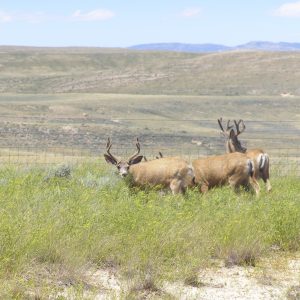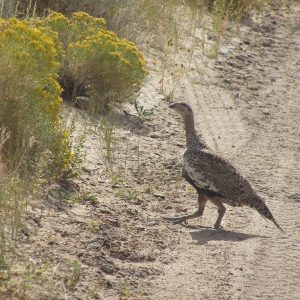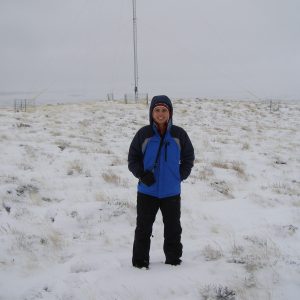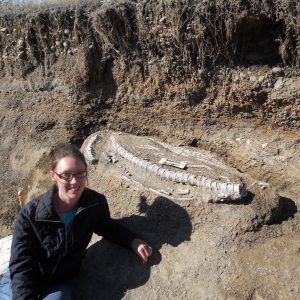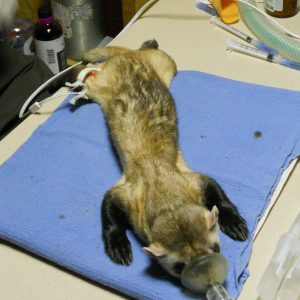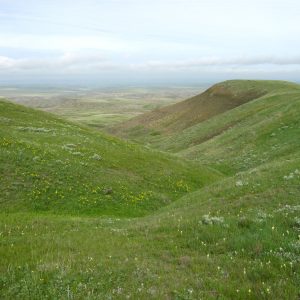The first few weeks of my internship at the Bureau of Land Management State Office in Cheyenne, Wyoming were packed full of reading procedural manuals and scientific articles, deciphering acronyms, shaking new hands and attending meetings. It can be described as nothing less than a fire hose of information to the face. I found that the only way to make sense of the planning process was to dive in head first and hope that I made it up to the surface for air. After weeks of long days in the office, hours of reading, countless cups of coffee, and dutiful guidance from my supervisors, I am beginning to grasp (and even apply) some components and processes of land use planning.

These "snow fences" along highways are a novelty to me and took me a few miles to figure out what they were during my drive down to Cheyenne.
Upon my arrival to Cheyenne, my focus has been directed at a land use plan amendment and associated Environmental Impact Statement for six of Wyoming’s Field Offices. These amendments will revise Sage Grouse and sage brush habitat management for 15 million acres of public land. The purpose of the amendment is to address needed changes in the management and conservation of Greater Sage Grouse habitats. The need for these amendments is partly due to the Greater Sage Grouse being classified by the Fish and Wildlife Service as a species that is warranted for protection under the Endangered Species Act, but precluded by higher priority listing actions. The bird is currently listed as a candidate species. Because the BLM in Wyoming manages over half of all remaining sagebrush habitat in the United States (more than 57 million acres), these amendments will play a crucial role in the preservation of Sage Grouse habitat. The goal of the amendments is to prevent the Sage Grouse from becoming listed as a threatened or endangered species, as this listing would have a “significant adverse effect” on the economy, customs, and culture of Wyoming. Sage grouse numbers have been decreasing in part due to loss, degradation and fragmentation of sage brush grassland habitats. Causes of habitat fragmentation and loss include but are not limited to oil and gas development, mining, and wind energy developments. Currently, the BLM is in the process of finalizing a list of management action alternatives that will be applied to designated key sage grouse habitat areas in Wyoming.
While working on the Sage Grouse amendments, I have found that communication, clarity, and consistency are key components for creating an effective, usable amendment. The Sage Grouse amendments may only apply on BLM- administered lands, but dozens of other organizations/ agencies are working side by side with the BLM providing information, input, and advice on issues at hand. The ability to communicate effectively not only within your own agency, but externally with numerous other agencies is instrumental for the progress and development of these amendments.
Communicating clearly is important if the Sage Grouse amendments are to be applied in the context at which they were intended to. Management actions need to be written in a way so that they cannot be interpreted in multiple ways. This is much harder than it sounds! A single phrase may yield multiple changes before the right tone and intent is achieved. This art of “wordsmithing” obligates planners to parse out what needs to be communicated, analyze how the words could be interpreted by other people, and consider who will be applying this language specific to a particular resource. The resulting language should be a clear and concise statement that can be easily understood and implemented by all parties involved.
Consistency has also been a matter of contention while working on the Sage Grouse amendments. First of all, any management actions the BLM implements must be consistent with any previously enacted laws, statutes, acts, etc. The amendments also need to be consistent with existing BLM policies. While crafting the amendments, planners also need to be consistent within the document as well. Definitions of terms must stay the same throughout the document, and these terms cannot be changed. For example, the words “variance” and “deviance” have a similar meaning. However, these two words could be interpreted differently in the amendments when applied in different ways. Therefore, consistency throughout the amendments not only contributes to the clarity of the document, but also effectively communicates the intended message to the reader.
After spending 2 months in the Wyoming State Office, I finally had the opportunity to leave Cheyenne’s city limits and explore some of Wyoming’s BLM land. I was in awe of the abundance and diversity of the species that I observed utilizing sage brush habitat. Scattered between the pronghorn, coyotes, deer, rabbits and raptors, were the footprints of human activities utilizing the same resources. I observed oil pads, natural gas compression stations, a surface mining operation, wind turbines towering 500 feet above, cattle grazing, roads, fences, and transmission lines among the sagebrush landscape. Seeing how many uses this land offers reminded me why a land use plan with the goal of “multiple use and sustained yield” is so important (and difficult). In some areas, in order to protect the resources needed by Sage Grouse to persist, other resource uses may be limited. Additionally, in some areas, other resource uses must not be compromised. Observing this delicate balance of resource use first hand was an eye opening experience, and gave me a better perspective of the purpose, need, and goals of the Sage Grouse amendments.
-Katie Klein
BLM, Cheyenne WY






